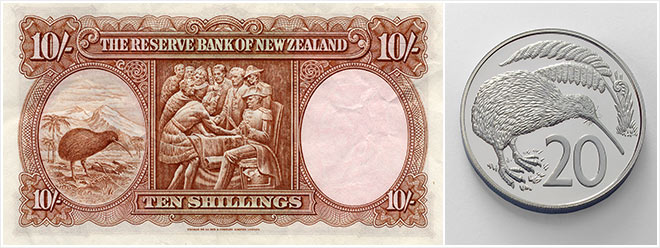
In the late 19th century the kiwi was widely used as a commercial trademark, and appeared on banknotes. This 10-shilling note is from the second series of banknotes issued by the newly established Reserve Bank, in 1940. The first series had been issued in 1934. The image of the kiwi was based on J. G. Keulemans’s illustration, which had appeared in Walter Buller’s A history of the birds of New Zealand (1873). The kiwi was also on the 2-shilling coin, facing left. When decimal currency was introduced in 1967, the kiwi reappeared on the 20-cent coin, but this time it faced right.
Te whakamahi i tēnei tūemi
This item has been provided for private study purposes (such as school projects, family and local history research) and any published reproduction (print or electronic) may infringe copyright law. It is the responsibility of the user of any material to obtain clearance from the copyright holder.










Tāpiritia te tākupu hou